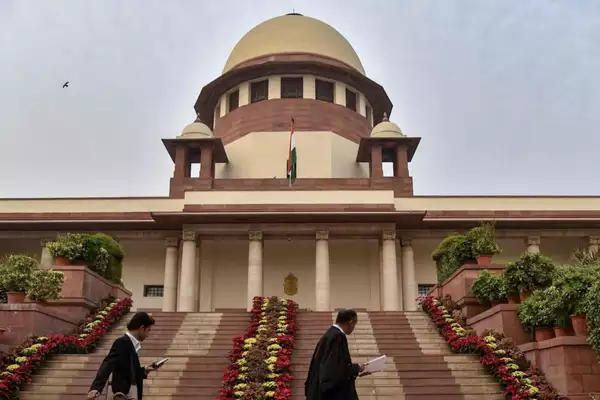A recent Supreme Court judgement redefined the operation of the Scheduled Castes (SC) and Scheduled Tribes (ST) quotas for the first time since reservations were introduced in the Constitution in 1950.
Key Highlights of the judgement:
- This landmark judgment reframes the reservation system, aiming to provide more equitable protections to the most disadvantaged communities within the SC and ST categories.
- It permitted states to create sub-classifications within the SC and ST categories to provide fixed sub-quotas to the most backward communities.
- It overturned the 2004 E V Chinnaiah v State of Andhra Pradesh decision, which held that the SC/ST list is a “homogenous group” that cannot be divided further.
- Article 341 of the Constitution allows the President to list SCs through a public notification, providing 15% reservation in education and public employment.
- But some groups within the SC list have been underrepresented, so states extended more protection to these groups, but judicial scrutiny has ensued.
- In 1975, Punjab government backed for first preference in SC reservations to the Balmiki and Mazhabi Sikh communities.
- The court held that sub-classifying SCs violated the right to equality under Article 14, followed by challenges to it in coming years.
- The Bench disagreed that SCs are a homogeneous group and unequals within the list of Scheduled Castes, Scheduled Tribes, and socially and educationally backward classes.
- The key issues included whether all castes in the SC list should be treated similarly, whether states can sub-classify the Presidential list, the yardstick for sub-classification.
- Other problem was whether the ‘creamy layer’ principle applies to SCs.
- The majority opinion held that states could identify different degrees of social backwardness and provide special provisions.
- States must demonstrate a need for wider protections, bring empirical evidence, and have a “reasonable” rationale for sub-classifying sub-groups.
- The ‘creamy layer’ exception for SCs and STs, ensures that only those in need benefit from quotas.
Prominent SC and ST communities in some states:
- In Maharashtra, the Mahar and Matang are prominent SC communities, with Mahar being socio-politically proactive and largely Buddhist, while Gond and Bhil are the largest tribes.
- In Rajasthan, the Meghwal, Bairwa, and Jatav are dominant SC communities, with Meena and Bhil being the largest tribes.
- Odisha has 62 tribes, with Khond and Santal being the largest, while Pan and Dom are the dominant SC communities.
- Chhattisgarh‘s STs make up over 30% of the population, with Gond, Kawar/Kanwar, and Oraon being the largest tribes.
- Madhya Pradesh’s SCs are about 15.6% of the population, with the Bhil and Gond being the largest tribes.
- In West Bengal, the Rajbanshi and Matua are the largest SC groups.
- While in Gujarat, Vankar and Rohit are the dominant SC communities, with Bhil being the largest tribe.
- Assam‘s Bodo and Karbi are the largest tribes, while in Tripura, the Tripuri clan includes the Debbarma community.
- In Uttarakhand, the largest SC groups are Harijan and Balmiki, with Jaunsari and Tharu being the largest ST groups.
Ref: Source
| UPSC IAS Preparation Resources | |
| Current Affairs Analysis | Topperspedia |
| GS Shots | Simply Explained |
| Daily Flash Cards | Daily Quiz |
Frequently Asked Question:
What was the judgment of E V Chinnaiah v State of Andhra Pradesh, 2004?
E V Chinnaiah v State of Andhra Pradesh, 2004 decision ruled that SCs/STs should be treated as a “homogenous group” and could not be further divided.
Which are the Prominent SC and ST Communities in Maharashtra and Rajasthan?
Maharashtra: Mahar and Matang (SC); Gond and Bhil (ST).
Rajasthan: Meghwal, Bairwa, and Jatav (SC); Meena and Bhil (ST).
What is the Creamy Layer’ Exception for SCs and STs?
The judgment supports the ‘creamy layer’ exception for SCs and STs, ensuring that only those who are in need benefit from quotas.


